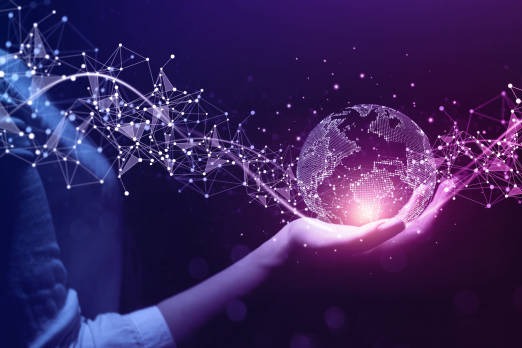Internet of Things: Transforming Our World through Connectivity
The Internet of Things (IoT) has become a transformative technological force, revolutionizing the way we interact with our surroundings. It is a network of interconnected devices, each equipped with sensors, software and other technology that enables them to communicate and exchange data with other devices over the Internet. In this article, we delve into the world of IoT to understand its principles, explore its applications, and reflect on its impact on every aspect of our lives.
Learn about the Internet of Things:
At its core, the Internet of Things is a vast network of interconnected devices, ranging from everyday items like refrigerators and thermostats to more complex systems like industrial machinery. These devices are equipped with sensors and actuators that collect and transmit data, making them “intelligent” and able to respond to their environment.
How Does IoT Work?
IoT devices collect data through sensors or directly from user input. This data is then sent to a central cloud-based platform where it is processed, analyzed and turned into actionable insights. Users can access and control these devices through apps on their smartphones, computers, or other Internet-connected devices.
Key components of Internet of Things:
- Devices and Sensors: These are physical objects equipped with sensors or actuators that collect data and interact with the environment.
- Connectivity: Devices are connected to the internet or to each other, enabling seamless communication and data exchange.
- Data Processing: The data collected from the device is sent to a central server or cloud platform for processing and analysis.
- User Interface: The processed data is provided to the user through an application, allowing them to monitor and control the device remotely.
Applications of IoT:
- Smart Home: The Internet of Things has revolutionized home automation. Smart thermostats, lighting systems, security cameras and appliances can be controlled remotely to increase energy efficiency, comfort and safety.
- Healthcare: IoT has facilitated the development of wearable health monitors, remote patient monitoring systems, and smart medical devices to improve healthcare and patient outcomes.
- Transportation: IoT is used in smart transportation systems, including traffic management, connected vehicles, and predictive maintenance, to make roads safer and more efficient.
- Smart City: IoT can be used to optimize urban infrastructure, manage traffic flow, improve waste management, increase public safety and reduce energy consumption.
- Industrial Internet of Things (IIoT): Industries are leveraging IoT for predictive maintenance, monitoring machine health, optimizing operations, and improving overall productivity and efficiency.
Benefits of IoT:
- Efficiency and Productivity: IoT optimizes processes and workflows, reduces operating costs and increases productivity.
- Improved decision-making: Data collected through IoT helps businesses and individuals make informed, data-driven decisions.
- Improve quality of life: IoT in healthcare, smart home and wearable technology improves quality of life by ensuring better health monitoring and efficient living.
- Environmental Impact: IoT-enabled solutions can promote sustainable development by reducing energy consumption and improving resource management.
Challenges and considerations:
- Security and Privacy: The interconnected nature of IoT raises concerns about data security and privacy. Protecting personal and sensitive information is critical.
- Interoperability: Ensuring that different IoT devices and platforms can communicate and work together seamlessly is a major challenge.
- Scalability and Reliability: As the number of IoT devices increases, scaling the infrastructure to handle the growing data load becomes a critical issue.
In summary, IoT represents a paradigm shift that is reshaping our world and offers tremendous opportunities for efficiency, convenience, and innovation. However, to realize the full potential of IoT, it is crucial to address challenges such as security, interoperability and scalability. As we move forward, a thoughtful approach to IoT implementation is critical to reaping the benefits and ensuring a connected, efficient and sustainable future.

Muhammad sajid
Hhhhjjnn
November 13, 2023KyvsYbBdCmTuvIm
KyvsYbBdCmTuvIm
November 22, 2023Lucille Moran
Lucille Moran
December 4, 2023Winston Shaw
Winston Shaw
December 19, 2023Vicente Frost
Vicente Frost
December 27, 2023Persephone Lynch
Persephone Lynch
January 10, 2024Layne Strickland
Layne Strickland
January 11, 2024Alexis Bown
Hey!
Hey, I just stumbled upon Ultimate AI and it’s seriously impressive. It’s revolutionizing the AI scene. You’ve got to check this out: https://www.socialsurge.ai/recommends/ultimate-ai/
I directly considered you all at comicsvideo.xyz after I used this!
January 12, 2024Matthew Martinez
Hi, I’ve observed some inaccuracies in your Google listing; is this the correct contact for addressing them?
January 15, 2024Maisie Vega
Maisie Vega
February 18, 2024Kobe Cook
Kobe Cook
February 20, 2024